 Your new post is loading...
 Your new post is loading...
Scholars in public relations have contended that organization-public relationship (OPR) quality has multiple dimensions, including the oft-cited list of trust, satisfaction, control mutuality, and commitment. The concept of OPR quality is assumed to be positive (Heath, 2013), which nevertheless does not describe relational problems in reality. In this blog post, I introduce an additional side of OPR quality—distrust, and how it differs from trust. Distrust is often considered as simply the opposite of trust by organizational researchers and excluded as a component of OPR quality in the public relations literature. However, distrust is not the absence of trust. For example, an employee may have both low levels of trust and distrust in his or her colleagues who resemble casual acquaintances in the organization. They only occasionally cross paths with these coworkers. They are not confident in or very watchful of these relational partners. Also likely the employee could feel both high levels of trust and distrust in his or her superiors. They trust the management, as representatives of the organization, in some aspects but distrust in other aspects. In an employee survey (N=583), I tested distrust as a new dimension of OPR quality (Shen, in press). I found that both distrust and trust were distinct from each other. The study suggested that OPR quality is not inherently positive. Employees may perceive sinister intentions of the organization’s conduct. Even those who highly trust their employing organizations do not necessarily perceive low distrust, and vice versa. Employees could feel confident about the organization’s capabilities—trust, while at the same time they are skeptical about whether the organization keep employees’ interests in mind when making decisions—distrust....
Stakeholder communication: It is simply not enough for an agile product development organization to create great code and ship the resulting product like a clockwork. You also need to talk about, particularly in the beginning of your agile transition. Marketing the agile journey of product and engineering to the rest of the organization—and thus getting their buy-in—is a critical success factor to step up the game: You want to become agile, not doing “Agile”. So, learn more about ten proven stakeholder communications tactics that contribute to making this happen....
Encouraging headline, no? This new paper comes from the Reuters Institute for the Study of Journalism at Oxford, UK, and we have so many mixed feelings about it right now.
Everyone knows that the PR-to-journalist ratio grows more lopsided by the day, but this study’s findings confirm that the power shift goes deeper than that.
In short, “hacks” need “flacks” more and more whether they want to admit it or not. The reverse isn’t really true, though, so the dude in the image above might want to pour himself another stiff one…
Investigating the gun industry, Muslim extremists, and high-stakes litigation, I’ve grown accustomed to deadline intimidation from corporate legal departments or an executive’s personal PR squad, but only this week am I getting a feel for what it’s like to be the target when a sovereign nation goes into crisis-communication mode.
Worried about revelations in Law of the Jungle, my soon-to-be-released book about the epic Chevron (CVX) oil pollution case, the Republic of Ecuador’s U.S. public relations advisers, New York-based Ketchum, has sent a six-page, single-spaced memo to Ecuador’s ambassador to the U.S., Nathalie Cely. Marked “reservado y confidencial,” the memo, prepared in Spanish throughout, outlines “difficult questions” the book raises “that negatively affect Ecuador,” and includes an ad hominem swipe. “It remains unclear when and how many times Barrett visited Ecuador or if he interviewed anyone from the Government,” the memo states. “This can be converted into a point that we can raise, but only in suitable settings and among appropriate journalists.”
I obtained a copy of the memo from a helpful noncombatant who works for neither Ketchum nor the ambassador and who requested anonymity for all the obvious and usual reasons. The damage-control document is a peculiar combination of advice on how to discredit the messenger—“this can be converted into a point …”—and admissions that the book raises issues that do not reflect well on Ecuador’s government....
There is no shortage of stories and anecdotes to illustrate how the best strategies can nearly always be reduced down to a brief but powerful statement and even more ink has been spilled describing the dangers of strategy statements that read like detailed action plans.
But how do you go about actually crafting — and using — a 15-word strategy statement?
My approach is based on narrative techniques. I begin by working with clients to write a story based on this template:...
The social media director who helped build marketing arms for brands including TurboTax, Applebee’s, and H&R Block explains why he’s moving on.
Social networks and social media are changing rapidly, and it’s no longer about the network. It’s about convergence.
My wacky, brilliant, and ruggedly handsome colleague Aaron Perlut calls this “triangulation”—the use of PR, search, and social to move the needle.
Many also talk about this as the paid, owned, and earned approach. I dub it convergence.
The time when all of these practices come together and require us, as communicators, to know, use, and maximize our use of all of them....
...PR News: One of your seven principles of business brilliance is "know-how is good. "know-who is better." How would that apply to the work of PR pros and marketers?
Lewis Schiff: Much of the middle-class mentality focuses on the development of technical skills in order to succeed (lawyer, doctor, etc.). However, at the higher levels of wealth, we see that all of those "trades" can be hired for. The most successful among us build strong teams while they focus their energies on creating extremely effective networks. Depending on the task, an effective network can be five strong relationships or 5,000 thin relationships. However, for the most important strategic relationships, we see that very successful people have very deep relationships with just a few people.
For communicating, a large network is desirable. But for influencing strategy and crafting smart messaging, it probably makes more sense to cultivate fewer relationships where there is greater intimacy and support, rather than a "WAN" or wide-area network....
How does the third largest company in the world connect with customers? In a recent interview, GE's Executive Director of Global Brand Marketing explains how GE focuses on brand content that uncove...
How important are Instagram, Pinterest, YouTube, and video to your external communications? Online marketing increasingly will rely on images as the digital world evolves, a study shows.
...Questions, on the other hand, can provide a reality check on whether or not a business is staying true to what it stands for and aims to achieve. So herewith, derived from interviews for my forthcoming book, A More Beautiful Question, are thoughts from a couple of top CEOs (Panera Bread’s Ron Shaich and Patagonia’s Casey Sheahan) and a trio of leading business thinkers/consultants (the Harvard Business School’s Clayton Christensen, Peer Insight’s Tim Ogilvie, and SY Partners’ Keith Yamashita). The following five “mission questions” are designed to keep a business focused on what matters most....
The capability of LinkedIn to be an effective platform for strategic communication is both constrained and advanced by its unique properties. Make no mistake, however. When operating in a B2B and/or services-oriented environment, organisations can leverage LinkedIn via a number of potent means – e.g. market research, differentiation, positioning, viral marketing – to deliver business results....
My bias towards believing LinkedIn is better for service-leaning organisations is because of LinkedIn’s proclivity for better suiting the approaches of thought leadership and inbound marketing (noted below)....
If you’re in this line of work you can hardly open a business, technology or marketing trade, peruse your favorite site, or scan your Twitter stream without seeing some mention of the transformational changes being driven by hyperconnectivity. And despite all that, here’s a reality so surprising as to be staggering — 99% of our world is not connected yet… That’s all about to change. By various estimates, somewhere between 40 and 50 billion things will be connected to the internet (and each other) by 2020. And while that’s enough to get the gears spinning for the technologists among us, the human implications are just as enormous (actually, more so). Because of course, hyperconnectivity isn’t just about networking device-to-device but also person-to-device and ultimately person-to-person. When you take all of the possible combinations into account, technology expert Thomas Koulopoulos (in his recent bookCloud Surfing) envisions a potential 4.9 sextillion connections. Now this is getting interesting…
I must have heard the words "we need to create a strategic plan" at least an order of magnitude more times than I have heard "we need to create a strategy." This is because most people see strategy as an exercise in producing a planning document. In this conception, strategy is manifested as a long list of initiatives with timeframes associated and resources assigned. Somewhat intriguingly, at least to me, the initiatives are themselves often called "strategies." That is, each different initiative is a strategy and the plan is an organized list of the strategies. But how does a strategic plan of this sort differ from a budget? Many people with whom I work find it hard to distinguish between the two and wonder why a company needs to have both. And I think they are right to wonder. The vast majority of strategic plans that I have seen over 30 years of working in the strategy realm are simply budgets with lots of explanatory words attached....
|
Political press conferences are pointless, and mostly about media showboating. This isn’t something reporters are supposed to admit. We’d all like more chances to see a potential presidential candidate on the hot seat. But these days, at these things, the heat isn’t on. I cringe at press conferences more than I learn from them, because they usually degenerate into shout-fests based on questions that are rarely designed to elicit any new information, but rather a response to the other party’s latest talking point. “Reporters ask questions not to get information, but to get a reaction,” Susan Milligan wrote in the Columbia Journalism Review last year. “And even with that strategy, they rarely succeed.” With social media, candidates don’t need to rely on reporters to convey their views. That in turn means that stories that break news are rarely produced by press conference. So why the ongoing obsession with press conferences? Could it have something to do with a need to justify the money being spent by mainstream news organizations to keep reporters on the campaign trail, versus the exclusive content they take away from that investment?...
People who don’t understand PR tend to conflate it with media relations. While earning media coverage is just one of many PR activities, the profound changes shaking the news business are good news for public relations. There’s hardly an online news outlet that hasn’t taken steps to offer native advertising. The decimation of the ranks of paid journalists means more opportunity for brands to influence what gets coverage. The ability for companies to go directly to their audiences, bypassing the filter of the media, has reduced reliance on hostile outlets to tell company stories.
If you think all this presages a rosy future for the PR business, think again. As PR becomes an increasingly potent force for shaping the news people see, practitioners will need to be at least as accountable to the public as they are to their clients. The time has come to take the “public” in public relations seriously....
Two of the most common words in the flack’s vernacular (next to coffee) are strategy and tactic.
According to Michael Porter, strategy leader and author of Competitive Advantage: Creating and Sustaining Superior Performance,
“Competitive strategy is about being different. It means deliberately choosing a different set of activities to deliver a unique mix of value.” The conundrum in this industry is that, although you have to think (strategy) before you do (tactic) anything, these two terms are often used interchangeably. It seems “being different” is understanding the difference in the first place."
This should help…
In short, a strategy is a larger, overall plan that can comprise several tactics, which are smaller, focused, less impactful action items that are part of the overall plan. Without a great strategy, there are no good tactics....
In case you missed it, Bloomberg Businessweek published an intriguing story yesterday by veteran journalist Paul M. Barrett that ran with the headline “What It’s Like to Be Attacked by Putin’s Flack.”
The “flack” in question is Ketchum — more specifically D.C.-based partner Kathy Jeavons, who “heads both the Ecuador and Russia accounts” for the firm.
For the record, Jeavons did not personally attack or even contact Barrett. But a source did forward him a talking points document that the firm wrote for Nathalie Cely, Ecuador’s ambassador to the United States. The doc included both well-stated observations about Ecuador’s history with Chevron and suggestions for casting doubt on the credibility of Law of the Jungle, Barrett’s upcoming book on the lawsuit that accuses the company of abusing its relationship with the people of Ecuador....
While a strong brand holds a company’s promise to customers, a company’s reputation gives it credibility and the license to operate. And for consumers, that reputation plays a strong role in guiding their decisions to buy—or not buy—a company’s products. In the U.S., that role is growing, as Americans are steadily learning more about companies before they do business with them.
According to the 2014 Harris Poll Reputation Quotient™ (RQ™) report, 56 percent of Americans actively investigate corporate behavior before they open their wallets. That figure is climbing, as this year’s figure is up 6 percent from 2012. And these information seekers aren’t just learning for their own benefit. This group actively shares what it learns and seeks to influence others in the process.
Consumer sentiment about the myriad of dimensions that make up corporate reputation isn’t an easy thing to gauge, but it’s certainly something for all companies to be aware of—and influence. But it’s not simply enough to know what people think about a company or brand. After all, if consumers are turned off by a particular company, they’re certainly not going to buy its products. The good news, however, is that Americans view corporate America more positively today than they have in recent history....
“Imagine you’re sitting across from a reporter at lunch. You’re telling them what you do, your story, why they should care about your product. You have to convince this reporter to not only write about you, but that what you’re doing matters. That you’re going to be successful.”
This is Caryn Marooney, Head of Technology Communications for Facebook. But before that, she co-founded OutCast, the elite PR agency that worked with one-time startups Amazon, Salesforce.com, Netflix and VMware. She’s seen firsthand how hard it is for young companies to capture press attention when they have zero brand recognition and limited resources.
Most founders set out to create something iconic but don’t know where to start. At First Round’s recent CEO Summit, Marooney boiled down this massive challenge into an execution plan and guidelines for startups to craft an image that will resonate with the public and the press, launch on a strong note, and build momentum as they grow — regardless of size and resources...
Even before you entered into the world of “business”, you were watching your competition. Whether it was in a classroom or on a sports team, you not only wanted to keep up, you wanted to know where the marker was set so you could go one step further. It was about finding new opportunities and setting new goals based on someone you aspired to beat.
At this time, when search is so important and detailed, and the Internet has grown so extensively, you have tons of different factors to consider when spying on your competition. This is where marketing tools come into play.In many cases, tools that help you monitor your own web performance also can help you gather data on your competition. So, you might be using some of these tools already, without using the features that help you evaluate your competitors. Here are some of the best tools out there...
While these inputs represent vital building blocks for connecting ideas, communities and people, successful content marketing strategies start with 2 core questions: 1. Who are we talking to…and why should they care? 2. What are we saying…and why should they share?
Content is the oxygen of your social media ecosystem. Strategy is the process of converting it into results by regulating what you do, why you do it and how. A content marketing strategy dependent on a specific channel, format or source will soon be on life-support as technology changes and interest wanes.
There is a better way.At Intuit we’ve had the opportunity to test, learn and iterate on several campaigns targeting global business professionals and small business owners. The content marketing strategy we’ve adopted focuses on maximizing the 2 core questions and scaffolding our content plans around consumer-driven motivations.The best and worst of content marketing strategies come to life in 4 types...
Learn how to update your PR strategies and tactics to make it more effective, more modern, and more inbound. ... The good news is that the amount of time people spend interacting with media is only growing; the bad news is that traditional PR is rooted in tactics that were only relevant twenty years ago. Hmm. What to do to compensate for that disparity? Below, we’ve outlined seven tactics to help you modernize your PR approach and bring it into 2013, along with some examples of great companies who have blogged, pitched, and publicized their way to great PR success in the 21st century....
Confession time: It was all once based on the hope theory, this art of public relations. Public relations pros would craft a message we hoped would resonate with influencers -- such as media. We then hoped they would find value in the message and distribute it to their audiences. Once out there, we hoped the intended audience would appreciate it, and shape behavior, opinion, or demand accordingly. And all this was done with the hope that some open-ended retainer would finance the entire public relations strategy. But today, hope is for dopes. That's because accountability is the calling card today in developing contemporary, scientific public relations strategies that impact real business objectives for clients. It's been a sea change, and a welcomed one, considering how far our industry has come and the tools now available in transforming public relations into a legitimate means of building real bottom line value....
In the past we’ve talked about addressing risks, assumptions and impediments during strategic planning, but what about current critical business issues? Should those be solved outside the process of strategic planning or be brought into the strategic loop of business forethought? This article addresses the tension between the present and the future (the tactical and the strategic) in corporate strategy development.
Atlanta Middle Schools did an excellent job at updating the public, via Twitter, during their January 2013 school shooting. Learn from their example here. Last Thursday, January 31st 2013, there was another shooting outside a middle school in Atlanta. A 14 year-old student was grazed by a bullet, and thankfully the wounds suffered were not life-threatening. Within minutes of the shooting, the shooter was disarmed and taken into custody. You can learn more about the shooting here. What truly impressed me about this crisis was the way Atlanta Public Schools leveraged Twitter to keep parents and the public informed. From their twitter handle, @apsupdate, Atlanta Public Schools...
|



 Your new post is loading...
Your new post is loading...

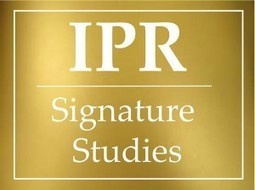




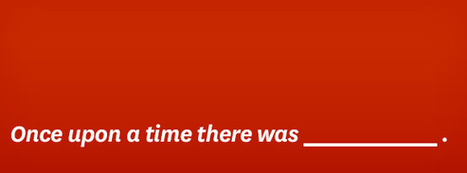











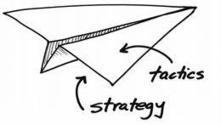

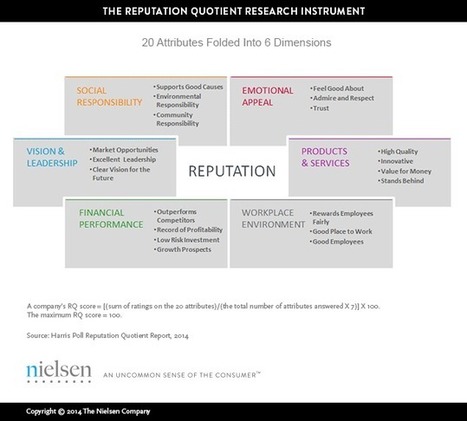


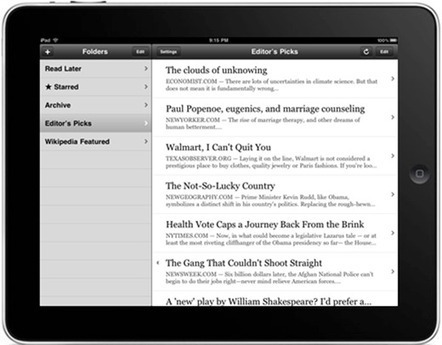

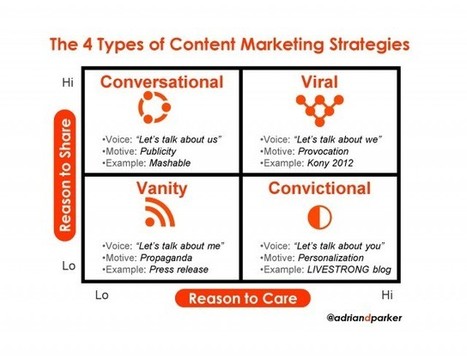




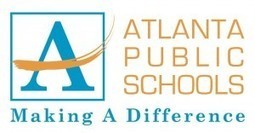





IPR research paper looks at how distrust impacts organizational relationships